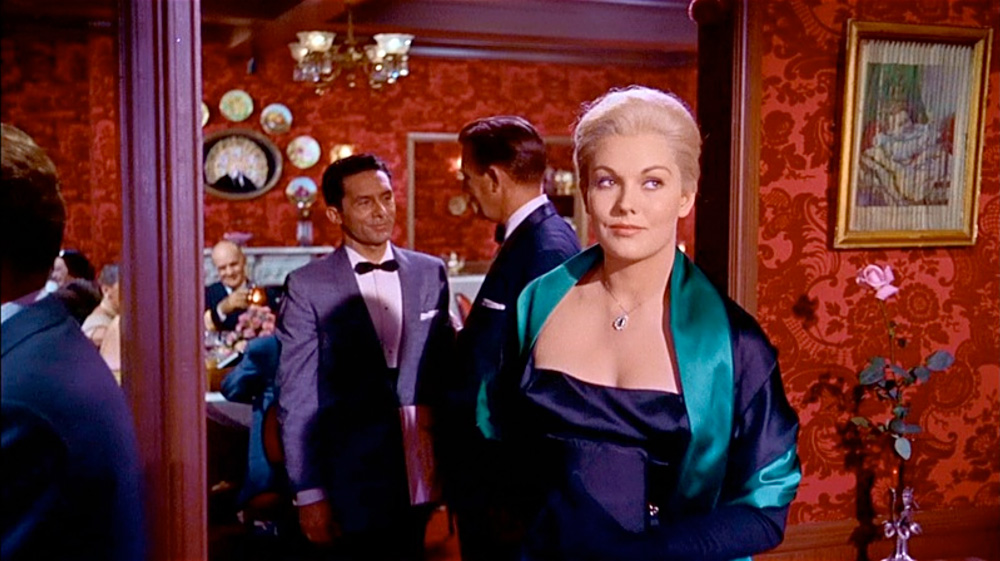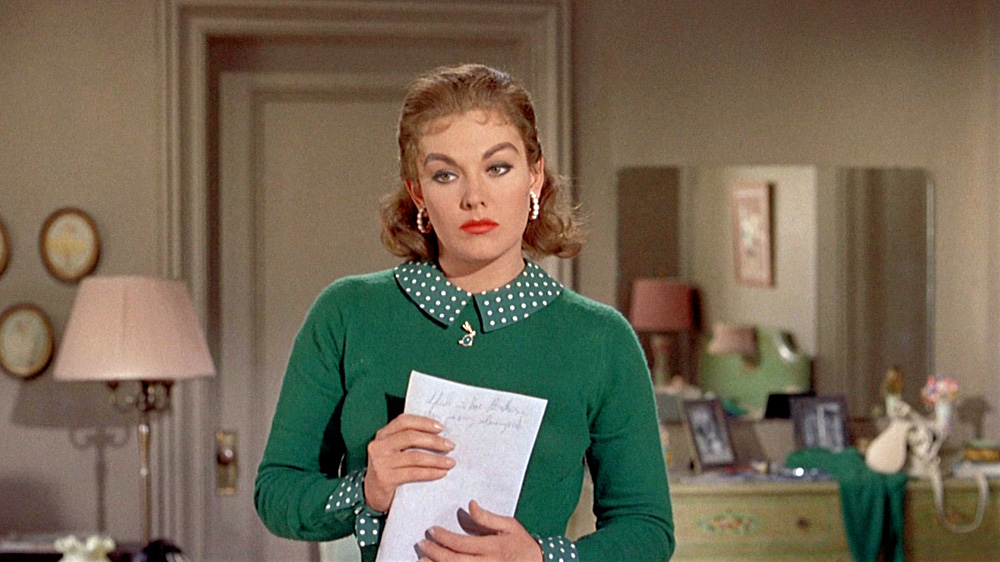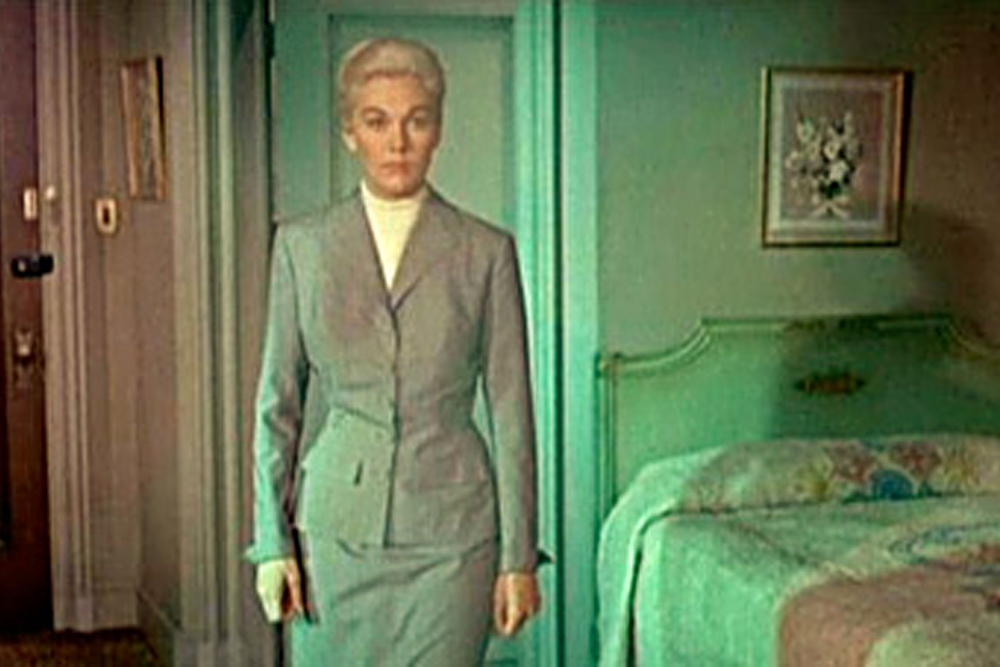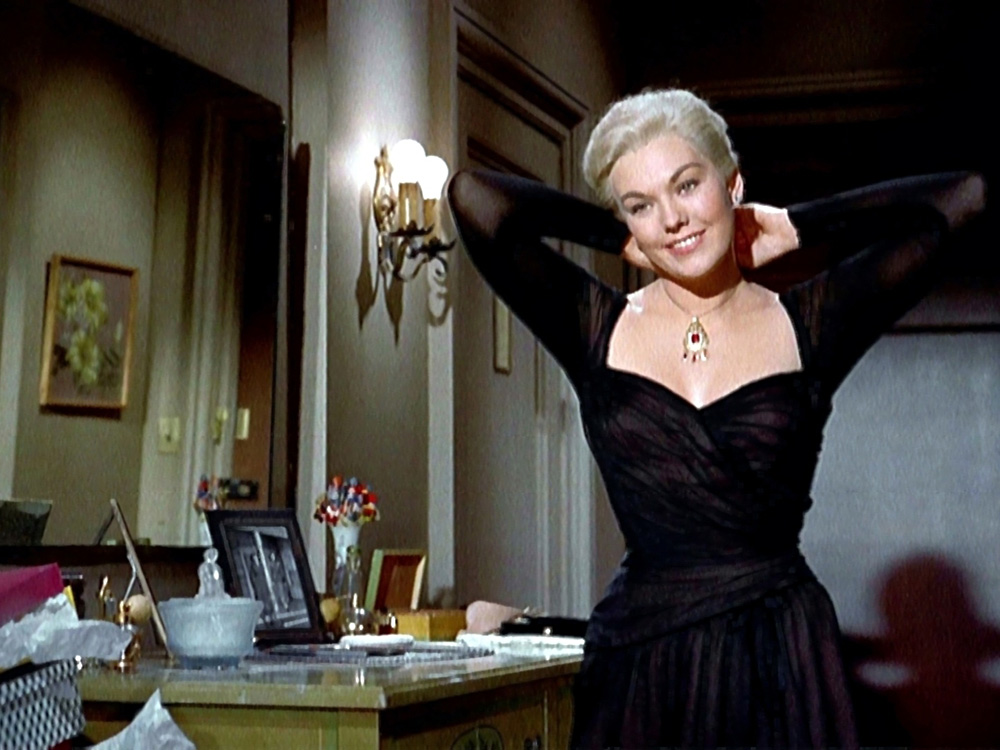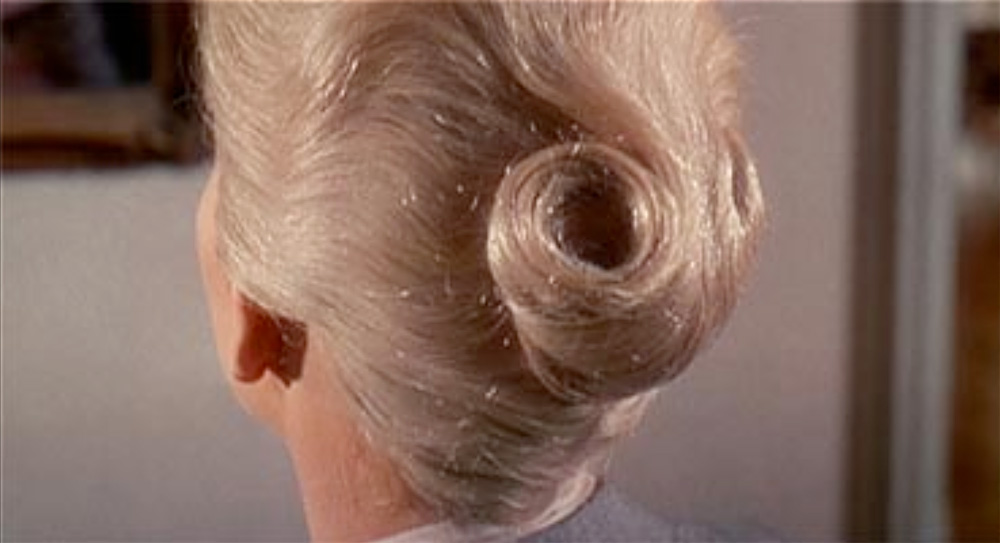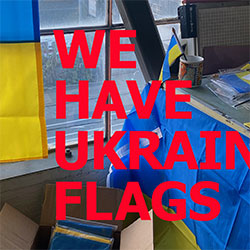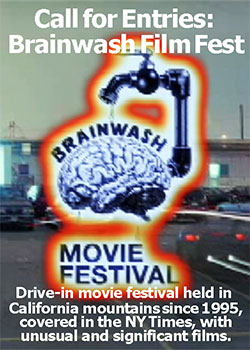The Surrealism of Alfred Hitchcock
by Michael Gould
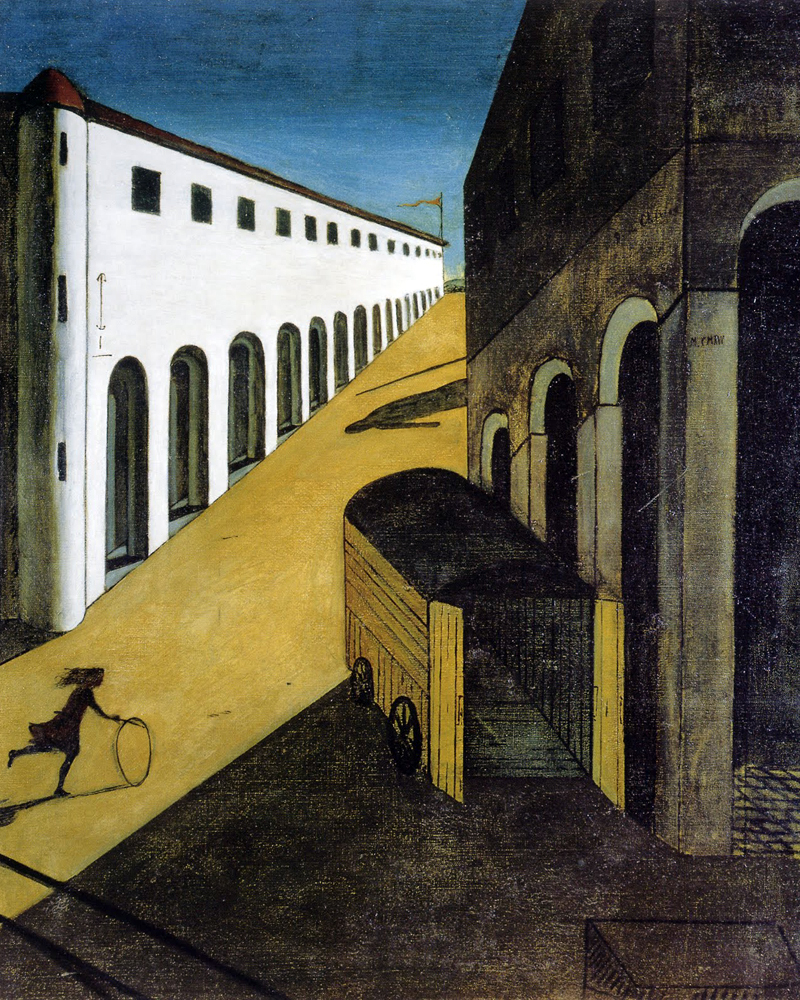 "The light of an eclipse," was Jean Cocteau's parsing of the paintings of Giorgio de Chirico which Hitchcock successfully captured in 'Vertigo'. illo: G. de ChiricoWhile a surrealist sensibility is present in many of Hitchcock’s later films, "Vertigo" (1958) is his surrealist masterpiece. Beneath the plot of a gripping suspense film is the disturbing and profound evocation of life lived in a dream world.
"The light of an eclipse," was Jean Cocteau's parsing of the paintings of Giorgio de Chirico which Hitchcock successfully captured in 'Vertigo'. illo: G. de ChiricoWhile a surrealist sensibility is present in many of Hitchcock’s later films, "Vertigo" (1958) is his surrealist masterpiece. Beneath the plot of a gripping suspense film is the disturbing and profound evocation of life lived in a dream world.
The plot, briefly: Scottie Ferguson, an ex-police inspector from San Francisco, having recently resigned due to his acrophobia (fear of heights), takes on a case for an old friend involving shadowing his wife, Madeleine, a suicidal neurotic who believes she is possessed by the spirit of her great-grandmother, Carlotta Valdes, a woman from the city’s early history.
Scottie falls for Madeleine but is unable to prevent her death, due to his phobia, when she actually falls from the bell tower of a church they are visiting. Following Madeleine’s death, Scottie has a nervous breakdown but is nurtured back to health by his old girlfriend, the prosaic Midge. One day Scottie sees a woman on the street who exactly resembles Madeleine but who disclaims any knowledge of her. Scottie is attracted to her (Judy, played by Kim Novak, who also plays Madeleine) and pursues her.
The viewer then learns something Scottie does not know—that Judy and Madeleine are the same person; Judy, having been the mistress of Scottie's friend, the man who set him up, was part of a plot to murder the real (wife) Madeleine so it would look like suicide. Scottie, unaware of this trick, makes Judy over in the image of the Madeleine he knew and still loves.
Eventually, becoming suspicious, and in an attempt to make Judy clarify her situation, Scottie takes her back to the church where the real Madeleine died and, despite his phobia, forces himself to lead her to the top of the bell tower; where Judy accidentally trips and plunges to her death.
Vertigo, a condition which causes dizziness, results from the simultaneous fear of and attraction to falling (metaphorically, the simultaneous fear of and attraction to death). Scottie finds himself attracted to a woman who at first represents death and then is death as he tries to bring her back to life. Madeleine is Scottie's ideal of death and his makeover of Judy in Madeleine’s image illustrates this. Scottie lives in self-delusion and through the filmmaker's methods we, the viewers, partake in his delusions.
The irrational nature of some of the plot elements adds to the film's sense of surreal otherworldliness. When Madeleine dies only halfway through the film—similar to Marion Crane’s early demise in "Psycho" (1960)—we are taken aback. Where to from here now that this major character has gone?
With the revelation that Madeleine and Judy are, in fact, the same person, the viewer's identification with Scottie is severed and we are startled. If Judy was really only impersonating Madeleine, why does she act so strangely through the rest of the film?
Is it because Judy was not just playing Madeleine, but has become Madeleine? Has she found herself being overwhelmed by another and is it the fear of that which accounts for her subsequent odd reactions? Is her fear of returning to the church a fear of being revealed as an accomplice in a crime or a fear of being totally subsumed by her Madeleine persona? All of Judy's actions from the moment of revelation onward become ambiguous and so through the rest of the film reality and illusion are enmeshed.
Hitchcock told François Truffaut, in their famous interviews, that he had attempted to capture the look of Giorgio de Chirico's paintings like "Mystery and Melancholy of a Street" and other iconic surrealist images in "Spellbound" (1945), but it was in “Vertigo” that he fully achieved this. In the long, wordless sequence when Scottie tails Madeleine on her wanderings about the city, accompanied by the haunting Mahleresque music of Bernard Herrmann, the cityscapes of de Chirico find perfect cinematic expression.
Here subjective tracking shots through the quiet, deserted locations of an art gallery, a graveyard, an old Spanish church cemetery—the exteriors shown under the golden light and long shadows of a late afternoon sun—have a dreamlike quality. There is the solitary figure of Madeleine moving silently through each locale like a ghost—which she eventually becomes to Scottie. The melancholy mood of the sequence continues through the scene where Madeleine attempts suicide near the Golden Gate Bridge.
Later Madeleine and Scottie go to a sequoia forest where the mood again is quiet and still, the giant trees towering in counterpoint to the minuteness of human life on the forest floor. Madeleine's hand passes over a display cross-section of tree trunk that illustrates the passage of the centuries (“1492, Columbus discovers America”) and as she points to a ring near the circumference she says, "That is where I come from." Intriguingly, as she pinpoints a moment in time she is, by omission, raising the issue of death. The scene ends with Madeleine begging Scottie to take her out of the ancient grove with its enveloping shadows.
Scottie’s nightmare, which is the climax of his nervous breakdown, has the feel of a textbook dream. Mixing live-action with animation painted in a hard edge, Pop Art-like style, similar to the art of the time, the effect is sterile yet striking. A brightly colored image of a posy of flowers, similar to the one held by Carlotta Valdes, in her portrait at the art gallery, as well as the duplicate held by Madeleine when she visits the gallery, is seen from above as it shatters into abstract smithereens that swirl around in whirlpool motion.
The spiral, itself, is a motif in the film. Along with the shattered posy, there's the spinning, spiraling computer-like graphics (albeit pre-computer) of the opening credits; Carlotta's hairstyle—then Madeleine’s hairstyle, then Judy’s—with the hair coiled round in a chignon; and, finally, the stairwell of the church bell tower. Seen from above, Scottie’s perspective, as he ascends the stairs, with the camera simultaneously tracking in and zooming out of the center of the stairwell, the viewer has a chance to subjectively experience Scottie's feelings of vertigo.
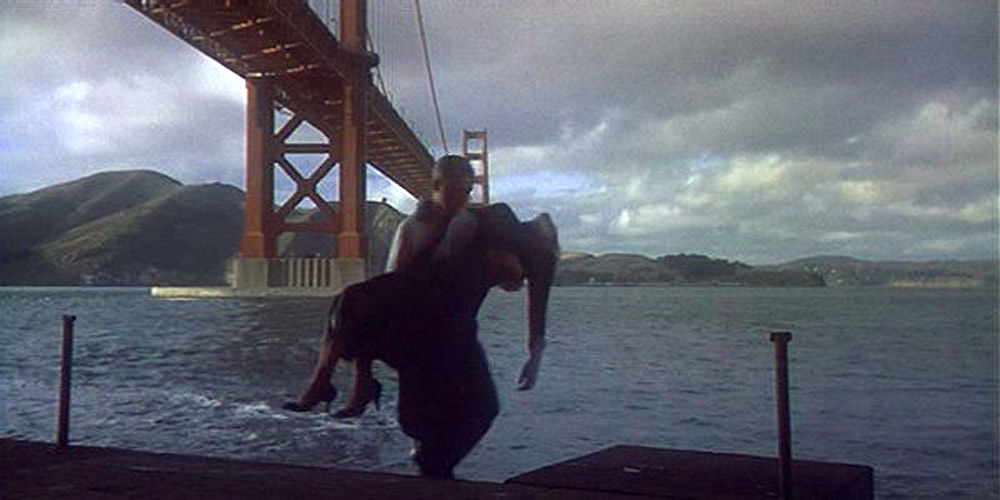 More 'eclipse light' as Scottie hauls Judy/Madeleine out of the San Francisco Bay. photo: courtesy A. HitchcockIn the end Scottie fails to reach the top of the bell tower before Judy falls to her death. The film's final shot is of Scottie, horrified and confused, looking into the distance from the top of the tower. The viewer, too, may be confused as to Scottie's status. Has he conquered his vertigo? Though he has successfully made it to the top of the tower, he is left precariously perched on an exterior ledge, the wind whipping his clothes, storm clouds gathering in the distance.
More 'eclipse light' as Scottie hauls Judy/Madeleine out of the San Francisco Bay. photo: courtesy A. HitchcockIn the end Scottie fails to reach the top of the bell tower before Judy falls to her death. The film's final shot is of Scottie, horrified and confused, looking into the distance from the top of the tower. The viewer, too, may be confused as to Scottie's status. Has he conquered his vertigo? Though he has successfully made it to the top of the tower, he is left precariously perched on an exterior ledge, the wind whipping his clothes, storm clouds gathering in the distance.
Although he appears to have conquered his fear of heights, Scottie's nightmare may not be over. Although he finally knows the truth, having solved the mystery of his friend’s wife's murder and clarified the identity of Madeleine/Judy—at what price? He has lost Madeleine, lost Judy and lost his sustaining illusions. The film ends with Scottie confronting the void.
Just as the imagery in “Vertigo" is dreamlike (the de Chirico effect) so, too, is the mise-en-scène, relying as it often does on the familiar surrealist device: the irrational juxtaposition of objects. When Scottie spies on Madeleine sitting in the deserted art gallery studying Carlotta Valdes’ portrait, Hitchcock uses a subjective—from Scottie's perspective—panning movement, first from the posy on the bench beside Madeleine to the posy held by Carlotta in the painting; then from Madeleine's hair with its prominent spiral to the spiral in Carlotta’s hair.
Later there is a humorous example of this kind of juxtaposition when Midge, Scottie's old faithful, shows him a self-portrait she has painted: a modernist copy of the Carlotta portrait but with Midge's face replacing Carlotta's. The expression of the painted Midge—appearing uncomfortable in the historical setting and at odds with Carlotta's period gown—is juxtaposed with flesh-and-blood Midge beside the painting: an exaggeration of the surrealist device of double imaging. It receives an unintended response from Scottie. Midge, who had hoped the parody self-portrait would show Scottie the absurdity of his obsession with Madeleine, finds him so deeply confused that her joke cuts him to the quick and alienates him from her even further.
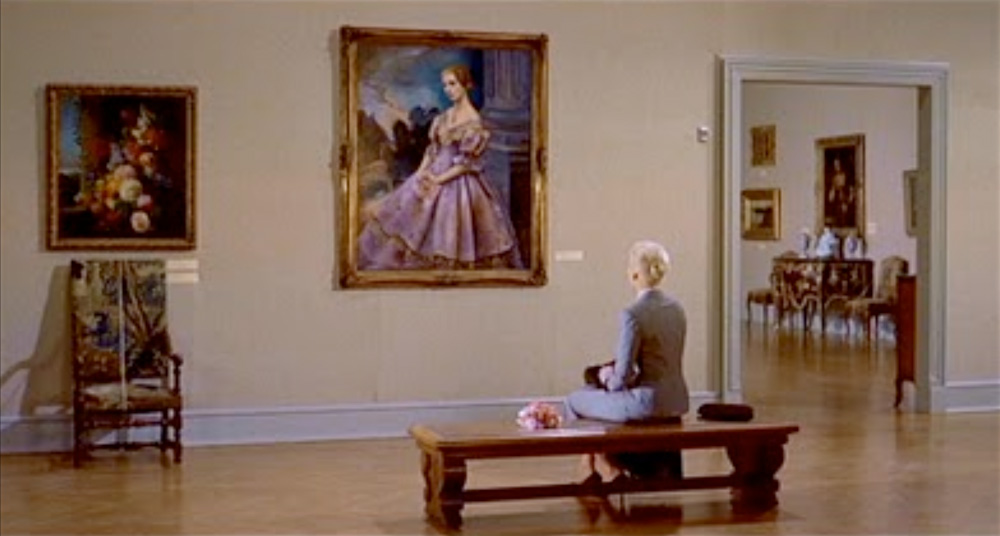 Madeleine gazes at the past in the form of a painting of her fictional ancestor, Carlotta Valdes. photo: courtesy A. HitchcockWhile the absurdity of this juxtaposition is humorous, a serious, truly profound juxtaposition occurs at the film's climax. Scottie and Judy, now completely transformed by Scottie into Madeleine, are dressing for dinner when she mistakenly puts on the jeweled necklace she had worn in her role as Madeleine—identical to the one in Carlotta's portrait. We see this subjectively, from Scottie's perspective, with a cut from a close-up of the necklace on Judy's neck—as reflected in her vanity mirror— to a match-cut of the necklace in the Carlotta painting. The camera then tracks back to reveal the empty gallery where Madeleine (Judy) sits alone, posy by her side, gazing at the painting of Carlotta.
Madeleine gazes at the past in the form of a painting of her fictional ancestor, Carlotta Valdes. photo: courtesy A. HitchcockWhile the absurdity of this juxtaposition is humorous, a serious, truly profound juxtaposition occurs at the film's climax. Scottie and Judy, now completely transformed by Scottie into Madeleine, are dressing for dinner when she mistakenly puts on the jeweled necklace she had worn in her role as Madeleine—identical to the one in Carlotta's portrait. We see this subjectively, from Scottie's perspective, with a cut from a close-up of the necklace on Judy's neck—as reflected in her vanity mirror— to a match-cut of the necklace in the Carlotta painting. The camera then tracks back to reveal the empty gallery where Madeleine (Judy) sits alone, posy by her side, gazing at the painting of Carlotta.
In creating these several double images, the filmmaker relates images that have already been firmly established in our mind with the emotion of longing—the longing for sex, for a dream, for death—and links them with the current situation of Judy and Scottie, a couple with a serious dilemma. Not only does Scottie see the necklace and imagine other images of it—the one on Madeleine's neck, the one in the painting—but he sees the necklace in reflection (in a mirror), which provides a further level of illusion, for Scottie as well as for the viewer.
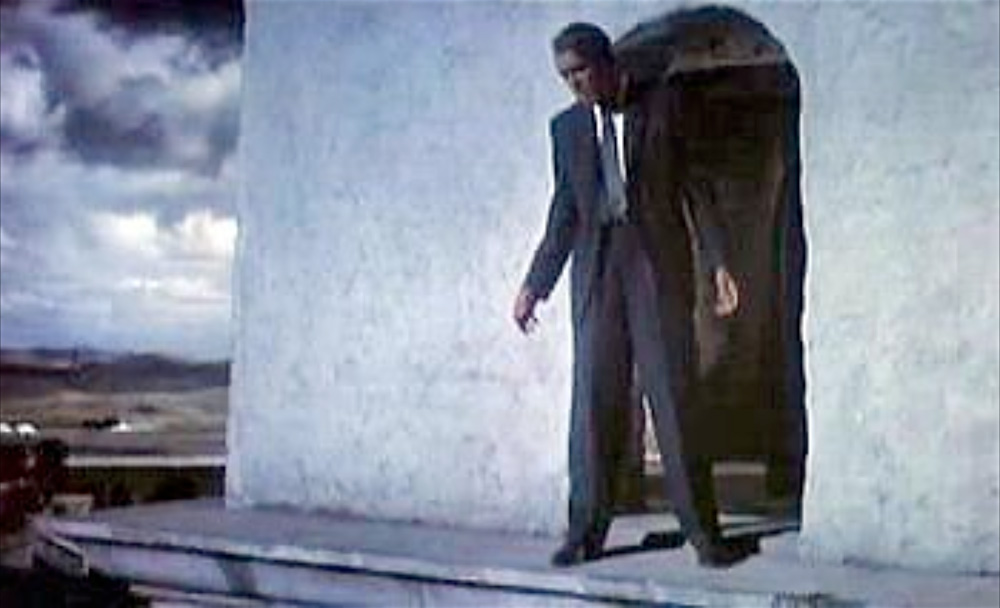 Although Scottie gains waking up from his 'Vertigo' dream, he loses the love of his life. photo: courtesy A. HitchcockHitchcock cuts from reality—the necklace Judy has put on but which had been part of a hoax initially—as reflected in a mirror, to a painting from which the camera then moves to Madeleine—who is 'really' Judy—studying the painting in the gallery. It is at this moment that Scottie realizes what the viewer had been made aware of much earlier, which is the duality of the woman standing before him. Although it is not the viewer's realization, we are equally astounded: astounded by the graphic richness and complexity of the imagery, which astonishes us more than could any revelation of that duality achieved through textual exposition, alone.
Although Scottie gains waking up from his 'Vertigo' dream, he loses the love of his life. photo: courtesy A. HitchcockHitchcock cuts from reality—the necklace Judy has put on but which had been part of a hoax initially—as reflected in a mirror, to a painting from which the camera then moves to Madeleine—who is 'really' Judy—studying the painting in the gallery. It is at this moment that Scottie realizes what the viewer had been made aware of much earlier, which is the duality of the woman standing before him. Although it is not the viewer's realization, we are equally astounded: astounded by the graphic richness and complexity of the imagery, which astonishes us more than could any revelation of that duality achieved through textual exposition, alone.
is the author of "Surrealism and the Cinema: Open-eyed Screening" (recently revised and available online), writes perverse verse and imaginary titles. He lives in Wellington, New Zealand.
Posted on Jun 19, 2012 - 04:11 AM
by Michael Gould
 "The light of an eclipse," was Jean Cocteau's parsing of the paintings of Giorgio de Chirico which Hitchcock successfully captured in 'Vertigo'. illo: G. de Chirico
"The light of an eclipse," was Jean Cocteau's parsing of the paintings of Giorgio de Chirico which Hitchcock successfully captured in 'Vertigo'. illo: G. de ChiricoThe plot, briefly: Scottie Ferguson, an ex-police inspector from San Francisco, having recently resigned due to his acrophobia (fear of heights), takes on a case for an old friend involving shadowing his wife, Madeleine, a suicidal neurotic who believes she is possessed by the spirit of her great-grandmother, Carlotta Valdes, a woman from the city’s early history.
Scottie falls for Madeleine but is unable to prevent her death, due to his phobia, when she actually falls from the bell tower of a church they are visiting. Following Madeleine’s death, Scottie has a nervous breakdown but is nurtured back to health by his old girlfriend, the prosaic Midge. One day Scottie sees a woman on the street who exactly resembles Madeleine but who disclaims any knowledge of her. Scottie is attracted to her (Judy, played by Kim Novak, who also plays Madeleine) and pursues her.
The viewer then learns something Scottie does not know—that Judy and Madeleine are the same person; Judy, having been the mistress of Scottie's friend, the man who set him up, was part of a plot to murder the real (wife) Madeleine so it would look like suicide. Scottie, unaware of this trick, makes Judy over in the image of the Madeleine he knew and still loves.
Eventually, becoming suspicious, and in an attempt to make Judy clarify her situation, Scottie takes her back to the church where the real Madeleine died and, despite his phobia, forces himself to lead her to the top of the bell tower; where Judy accidentally trips and plunges to her death.
Vertigo, a condition which causes dizziness, results from the simultaneous fear of and attraction to falling (metaphorically, the simultaneous fear of and attraction to death). Scottie finds himself attracted to a woman who at first represents death and then is death as he tries to bring her back to life. Madeleine is Scottie's ideal of death and his makeover of Judy in Madeleine’s image illustrates this. Scottie lives in self-delusion and through the filmmaker's methods we, the viewers, partake in his delusions.
The irrational nature of some of the plot elements adds to the film's sense of surreal otherworldliness. When Madeleine dies only halfway through the film—similar to Marion Crane’s early demise in "Psycho" (1960)—we are taken aback. Where to from here now that this major character has gone?
With the revelation that Madeleine and Judy are, in fact, the same person, the viewer's identification with Scottie is severed and we are startled. If Judy was really only impersonating Madeleine, why does she act so strangely through the rest of the film?
Is it because Judy was not just playing Madeleine, but has become Madeleine? Has she found herself being overwhelmed by another and is it the fear of that which accounts for her subsequent odd reactions? Is her fear of returning to the church a fear of being revealed as an accomplice in a crime or a fear of being totally subsumed by her Madeleine persona? All of Judy's actions from the moment of revelation onward become ambiguous and so through the rest of the film reality and illusion are enmeshed.
Hitchcock told François Truffaut, in their famous interviews, that he had attempted to capture the look of Giorgio de Chirico's paintings like "Mystery and Melancholy of a Street" and other iconic surrealist images in "Spellbound" (1945), but it was in “Vertigo” that he fully achieved this. In the long, wordless sequence when Scottie tails Madeleine on her wanderings about the city, accompanied by the haunting Mahleresque music of Bernard Herrmann, the cityscapes of de Chirico find perfect cinematic expression.
Here subjective tracking shots through the quiet, deserted locations of an art gallery, a graveyard, an old Spanish church cemetery—the exteriors shown under the golden light and long shadows of a late afternoon sun—have a dreamlike quality. There is the solitary figure of Madeleine moving silently through each locale like a ghost—which she eventually becomes to Scottie. The melancholy mood of the sequence continues through the scene where Madeleine attempts suicide near the Golden Gate Bridge.
Later Madeleine and Scottie go to a sequoia forest where the mood again is quiet and still, the giant trees towering in counterpoint to the minuteness of human life on the forest floor. Madeleine's hand passes over a display cross-section of tree trunk that illustrates the passage of the centuries (“1492, Columbus discovers America”) and as she points to a ring near the circumference she says, "That is where I come from." Intriguingly, as she pinpoints a moment in time she is, by omission, raising the issue of death. The scene ends with Madeleine begging Scottie to take her out of the ancient grove with its enveloping shadows.
Scottie’s nightmare, which is the climax of his nervous breakdown, has the feel of a textbook dream. Mixing live-action with animation painted in a hard edge, Pop Art-like style, similar to the art of the time, the effect is sterile yet striking. A brightly colored image of a posy of flowers, similar to the one held by Carlotta Valdes, in her portrait at the art gallery, as well as the duplicate held by Madeleine when she visits the gallery, is seen from above as it shatters into abstract smithereens that swirl around in whirlpool motion.
The spiral, itself, is a motif in the film. Along with the shattered posy, there's the spinning, spiraling computer-like graphics (albeit pre-computer) of the opening credits; Carlotta's hairstyle—then Madeleine’s hairstyle, then Judy’s—with the hair coiled round in a chignon; and, finally, the stairwell of the church bell tower. Seen from above, Scottie’s perspective, as he ascends the stairs, with the camera simultaneously tracking in and zooming out of the center of the stairwell, the viewer has a chance to subjectively experience Scottie's feelings of vertigo.
 More 'eclipse light' as Scottie hauls Judy/Madeleine out of the San Francisco Bay. photo: courtesy A. Hitchcock
More 'eclipse light' as Scottie hauls Judy/Madeleine out of the San Francisco Bay. photo: courtesy A. HitchcockAlthough he appears to have conquered his fear of heights, Scottie's nightmare may not be over. Although he finally knows the truth, having solved the mystery of his friend’s wife's murder and clarified the identity of Madeleine/Judy—at what price? He has lost Madeleine, lost Judy and lost his sustaining illusions. The film ends with Scottie confronting the void.
Just as the imagery in “Vertigo" is dreamlike (the de Chirico effect) so, too, is the mise-en-scène, relying as it often does on the familiar surrealist device: the irrational juxtaposition of objects. When Scottie spies on Madeleine sitting in the deserted art gallery studying Carlotta Valdes’ portrait, Hitchcock uses a subjective—from Scottie's perspective—panning movement, first from the posy on the bench beside Madeleine to the posy held by Carlotta in the painting; then from Madeleine's hair with its prominent spiral to the spiral in Carlotta’s hair.
Later there is a humorous example of this kind of juxtaposition when Midge, Scottie's old faithful, shows him a self-portrait she has painted: a modernist copy of the Carlotta portrait but with Midge's face replacing Carlotta's. The expression of the painted Midge—appearing uncomfortable in the historical setting and at odds with Carlotta's period gown—is juxtaposed with flesh-and-blood Midge beside the painting: an exaggeration of the surrealist device of double imaging. It receives an unintended response from Scottie. Midge, who had hoped the parody self-portrait would show Scottie the absurdity of his obsession with Madeleine, finds him so deeply confused that her joke cuts him to the quick and alienates him from her even further.
 Madeleine gazes at the past in the form of a painting of her fictional ancestor, Carlotta Valdes. photo: courtesy A. Hitchcock
Madeleine gazes at the past in the form of a painting of her fictional ancestor, Carlotta Valdes. photo: courtesy A. HitchcockIn creating these several double images, the filmmaker relates images that have already been firmly established in our mind with the emotion of longing—the longing for sex, for a dream, for death—and links them with the current situation of Judy and Scottie, a couple with a serious dilemma. Not only does Scottie see the necklace and imagine other images of it—the one on Madeleine's neck, the one in the painting—but he sees the necklace in reflection (in a mirror), which provides a further level of illusion, for Scottie as well as for the viewer.
 Although Scottie gains waking up from his 'Vertigo' dream, he loses the love of his life. photo: courtesy A. Hitchcock
Although Scottie gains waking up from his 'Vertigo' dream, he loses the love of his life. photo: courtesy A. Hitchcockis the author of "Surrealism and the Cinema: Open-eyed Screening" (recently revised and available online), writes perverse verse and imaginary titles. He lives in Wellington, New Zealand.
Posted on Jun 19, 2012 - 04:11 AM














